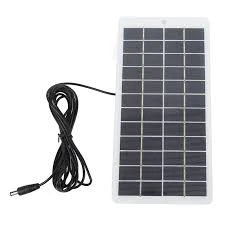Factors Influencing the Overall Expense of Installing Solar Panels on Your Roof
The Average Cost of Roof Solar Panels An Overview
As renewable energy sources gain traction, more homeowners are considering solar power as a viable option for increasing energy efficiency and reducing electricity bills. Among the various solar solutions available, roof solar panels have emerged as one of the most popular choices. Understanding the average cost of installing roof solar panels is crucial for homeowners who wish to make informed decisions about their energy investments.
Understanding the Costs
The average cost of roof solar panels can vary significantly based on several factors including the size of the solar system, the type of panels, the installation costs, and potential tax incentives. As of 2023, the average price for solar panel installation in the United States typically ranges from $15,000 to $25,000 for a typical residential system. This price usually accounts for the installation of a 6- to 10-kilowatt system, which can generate enough electricity to power an average American home.
Components of the Cost
1. Solar Panels The cost of the solar panels themselves is often one of the most significant components. There are various types of panels available, including monocrystalline, polycrystalline, and thin-film, each with its respective price points. Monocrystalline panels are the most efficient and tend to be more expensive, while polycrystalline panels are slightly less efficient but typically cheaper.
2. Inverters Solar inverters convert the direct current (DC) electricity generated by the panels into alternating current (AC) electricity that can be used in the home. The cost of inverters can be around $1,000 to $2,000, depending on the size and type.
average cost of roof solar panels

3. Installation Installation costs can also vary widely. On average, homeowners might expect to pay between $1,000 and $3,000 for professional installation services. Factors such as roof complexity, location, and height can influence these costs significantly.
4. Permitting and Inspection Fees Local governments may impose fees for permits and inspections, which can also add to the overall cost. It is advisable for homeowners to check with their local authorities regarding any additional expenses tied to solar panel installation.
5. Tax Incentives A significant cost factor to consider is the federal solar tax credit, which provides a deduction of up to 26% on the total installation costs. By taking advantage of these incentives, homeowners can significantly reduce the upfront costs associated with installing solar panels.
Long-Term Financial Benefits
While the initial costs of roof solar panels may seem high, the long-term benefits often outweigh these expenses. Homeowners can expect to see a return on investment through reduced electricity bills; many report savings of 50% or more. Moreover, solar panels can increase the property value—homes with solar energy systems often sell at a premium compared to those without.
Conclusion
Investing in roof solar panels is a significant decision that requires careful consideration of costs, savings, and financial incentives. The average cost of installation may vary, but the growing trend towards renewable energy and sustainability makes it a worthwhile investment for many homeowners. By accounting for all associated costs and potential savings, homeowners can make informed decisions about embracing solar energy, contributing not only to their financial benefit but also to a greener planet. As technology advances and costs continue to decrease, solar energy is set to become an even more accessible and attractive option for homeowners across the country.
-
Unlocking Energy Freedom with the Off Grid Solar InverterNewsJun.06,2025
-
Unlock More Solar Power with a High-Efficiency Bifacial Solar PanelNewsJun.06,2025
-
Power Your Future with High-Efficiency Monocrystalline Solar PanelsNewsJun.06,2025
-
Next-Gen Solar Power Starts with Micro Solar InvertersNewsJun.06,2025
-
Harnessing Peak Efficiency with the On Grid Solar InverterNewsJun.06,2025
-
Discover Unmatched Efficiency with the Latest String Solar InverterNewsJun.06,2025







